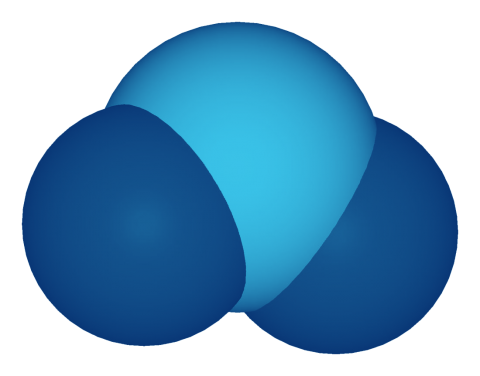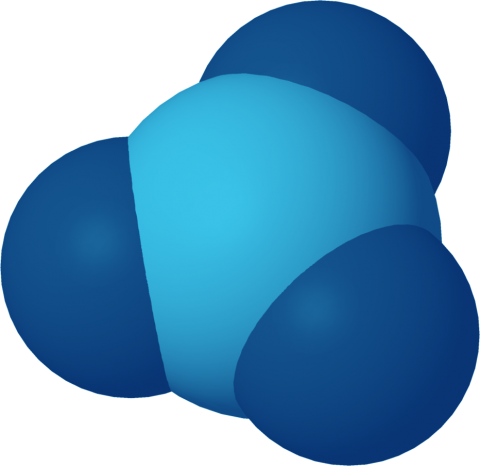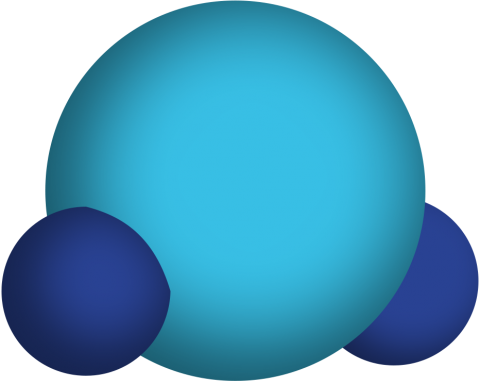SO2 is released by combustion of fuels, such as coal and heavy oil, in power stations, as well as within the processes of brick, glass, tile, Portland Cement, waste incinerators, biomass, metal smelting operations or any process where raw materials or fuels containing sulfur are introduced.
- Home
- Pollutants
Pollutants
Many industrial processes generate flue gases containing pollutants that can adversely impact people and the environment. We offer cost-effective solutions for their capture and neutralization.







SO2 - SULFUR DIOXIDE
Sulfur dioxide is an acid gas, also called sulfur oxide or sulfurous anhydride. It is non-flammable and non-explosive. With a pungent odor, this pollutant is toxic and a respiratory irritant. In plants burning sulfur-containing fuel, SO2 can, for example, be removed from the flue gas through dry sorbent injection, where SO2 reacts with hydrated lime (Ca(OH)2) to form calcium sulfite (1) or calcium sulfate (2):
- Ca(OH)2 + SO2 → CaSO3 + H2O
- Ca(OH)2 + SO2 + ½ O2 → CaSO4 + H2O
Where it comes from
Properties
Molecular formula | SO2 |
Molar mass | 64.066 g/mol |
Appearance | Colorless gas |
Odor | Pungent |
Acidity | 1.71 pKa |
Hazards | Toxic |
Boiling point | 14 °F |
LHOIST SOLUTIONS
Calcium compounds – in the form of limestone (CaCO3), quicklime (CaO) or hydrated lime (Ca(OH)2) – continue to be the dominant sorbents to control SO2 emissions. The choice of calcium sorbent depends on the type of capture process used. Tradeoffs on capital cost vs. operational cost for the various processes should be considered.HCl - HYDROGEN CHLORIDE
Hydrogen chloride is a colorless and odorless acid gas, also called hydrochloride or hydrochloric acid.
Non-flammable and thermally stable, HCl is toxic and corrosive. HCl is very soluble in water. Dissolution generates large amounts of heat.
Hydrogen chloride can be captured efficiently with calcium hydroxide (Ca(OH)2) sorbents. Optimum capture performance depends on the flue gas composition, flue gas treatment system and process temperature. The reaction mechanism is complex and takes place via the formation of calcium hydroxide-chloride (CaClOH) according to:
Ca(OH)2 + HCl → CaClOH + H2O
CaClOH + HCl → CaCl2 + H2O
Where it comes from
HCl comes from the combustion of chloride-containing waste (e.g. PVC) and chlorine-containing fuels, including coal. It is also possible to find chlorine in the form of inorganic salts (NaCl) in wood, paper and cardboard or in food and biomass waste containing salt.
Properties
Molecular formula | HCl |
Molar mass | 36.46 g/mol |
Appearance | colorless gas |
Odor | pungent |
Acidity | -6.3 pKa |
Hazards | corrosive, toxic |
Boiling point | -121 °F |
LHOIST SOLUTIONS
Hydrated lime has been used for many years in various dry sorbent injection processes. Industrial results have proven that Sorbacal® SP and SPS are capable of HCl capture above 98%, suitable for meeting regulatory requirements in the most challenging applications. Notably, in municipal and medical waste incinerators, HCl capture of more than 99% is reached. The appropriate solution can be tailored to meet the needs of any flue gas treatment installation.
In the US the introduction of the National Emissions Standards for Hazardous Air Pollutants (NESHAP) and the Mercury and Air Toxics Standards (MATS) requires control of HCl in a wide variety of industries. Therefore, dry sorbent injection is being widely implemented.
HF - HYDROGEN FLUORIDE
Hydrogen fluoride is a non-flammable and non-explosive gas, also called fluoric acid, hydrofluoride, hydrofluoric acid or fluorine monohydride. It has a pungent odor and is corrosive, irritating and toxic. Hydrogen fluoride in flue gas readily reacts with hydrated lime:
Ca(OH)2 + 2HF → CaF2 + 2H2O
Where it comes from
Hydrogen fluoride comes from the presence of fluoride in raw materials or combustibles. HF emissions can be generated from the combustion of coal or other fuels, fluorinated polymers or textiles, and by the decomposition of CaF2 and raw materials such as brick or glass. HF is also present in such waste as inert material, aluminum cans and synthetic fabrics.
Properties
Molecular formula | HF |
Molar mass | 20.01 g/mol |
Appearance | colorless gas or colorless liquid (below 19.5°C) |
Odor | sharp, pungent, irritating |
Acidity | 3.17 pKa |
Hazards | corrosive, toxic |
Boiling point | 67 °F |
LHOIST SOLUTIONS
Sorbacal® SP and in particular Sorbacal® SPS are both sorbents capable of capturing over 99% of HF emissions using dry and semi-wet processes. All our calcium-based sorbents can capture HF depending on your requirements and your specific operation conditions. Hydrated limes are superior to sodium sorbents like Trona and SBC for high and efficient HF removal. Today, a number of glass manufacturers worldwide use our sorbents for this particular high removal performance.SO3 - SULFUR TRIOXIDE
This compound is also called sulfuric anhydride or sulfur trioxide. SO3 is a clear, oily liquid, often present as a gas. It should be handled with extreme care as it reacts with water violently to produce highly corrosive sulfuric acid. SO3 reacts with hydrated lime to form calcium sulfate:
Ca(OH)2 + SO3 → CaSO4 + H2O
Where it comes from
This pollutant is principally generated in power plants; glass, brick and non-ferrous metal manufacturing; municipal and industrial waste incineration; and boilers fired with fuels such as coal and heavy fuel oil. In addition, SO3 concentrations can increase when selective catalytic reduction is used for NOx control, as this typically catalyzes oxidation of SO2 to SO3.
Properties
Molecular formula | SO3 |
Molar mass | 80.066 g/mol |
Appearance | colorless liquid (room temperature) |
Odor | sharp, irritating |
Acidity | < -10 pKa |
Hazards | oxidizing agent |
Boiling point | 113 °F |
LHOIST SOLUTIONS
Dry calcium hydroxide products are typically used for SO3 capture and address both visible plume and operational concerns associated with this pollutant.
Sorbacal® H is normally capable of keeping SO3 below the usual target of 5 ppm to control the visible blue plume. However, to achieve lower levels of SO3, enhanced hydrated lime products such as Sorbacal® SP are needed.
SeO2 - SELENIUM DIOXIDE
Selenium dioxide, also called selenium oxide, is an acid gas. It is non-flammable and non-explosive. With an odor of rotten radish, this pollutant is toxic and a respiratory irritant. In plants burning selenium-containing fuel, SeO2 can be removed from the flue gas through dry sorbent injection, where SeO2 reacts with hydrated lime (Ca(OH)2) to form calcium selenite (1) or calcium selenate (2):
- Ca(OH)2 + SeO2 → CaSeO3 + H2O
- Ca(OH)2 + SeO2 + ½ O2 → CaSeO4 + H2O
Where it comes from
Selenium is used as an additive in glass making and is released as SeO2 during the manufacturing process. SeO2 can also be released by fuel combustion in industrial processes, such as in coal fired power plants.
Properties
Molecular formula | SeO2 |
Molar mass | 110.96 g/mol |
Appearance | yellow-green |
Odor | pungent |
Hazards | corrosive, toxic |
Boiling point | 599 °F |
LHOIST SOLUTIONS
As for SO2 removal, calcium in the form of quicklime (CaO) or hydrated lime (Ca(OH)2) is the dominant chemistry used for control of SeO2 emissions. Selenium compounds are inherently more stable on calcium sorbents than sodium sorbents. The choice of calcium sorbent depends on the type of capture process used.
Hg - MERCURY
Mercury is the only metal that is liquid at standard temperature and pressure conditions. It is highly toxic through ingestion or inhalation. Vapor-phase mercury is part of the "micro-pollutants" group as being potentially present in very small quantities in flue gas (in µg/m3).
Where it comes from
Mercury is present in coal and other fuels and is released by industrial processes, such as in coal power plants, waste-to-energy and cement plants.
Properties
Molecular formula | Hg |
Molar mass | 200.59 g/mol |
Appearance | silvery |
Odor | no odor |
Hazards | toxic |
Boiling point | 674 °F |
LHOIST SOLUTIONS
In dry sorbent injection, such as activated carbon injection (ACI), mercury can be removed by physical adsorption onto the surface of suitable sorbents. These are typically carbon-based materials with very high surface areas. They include pulverized activated carbon, specialized surface-treated (or impregnated) activated carbon, or activated lignite coke. Blends with hydrated lime (Ca(OH)2) and similar sorbents can be tailored to meet the needs of any flue gas treatment installation. This offers a simple, flexible, economic and effective way for simultaneous removal of micropollutants such as mercury, and acidic gas components.Our product range
PCDD & PCDF - DIOXINS & FURANS
This group of micropollutants is classified as polychlorinated dibenzo dioxins/furans. They consist of chlorinated biphenyl molecules linked with different oxygen bridges and are highly toxic.
Where they come from
Dioxins and furans are generated in flue gases when both chlorides and organic matter are present at relatively low temperatures.